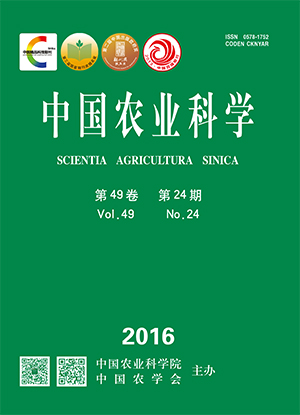-
Construction of Energy Potential Evaluation System for Miscanthus
- XIANG Wei, YI Zi-li, XIAO Liang, LIU Qing-bo, QIN Jing-ping
-
Scientia Agricultura Sinica. 2016, 49(24):
4687-4700.
doi:10.3864/j.issn.0578-1752.2016.24.002
-
 Abstract
(
624 )
Abstract
(
624 )
 HTML
(
7 )
HTML
(
7 )
 PDF (801KB)
(
436
)
PDF (801KB)
(
436
)
 Save
Save
-
References |
Related Articles |
Metrics
【Objective】Miscanthus (Miscanthus spp.) as a promising energy crop, nowadays research on it is a hot spot in the bioenergy field. Worldwide, there are 14 species in the Miscanthus genus and they can cross interspecies. The interspecific hybridization can create many natural hybrids, including some productive hybrids that can be directly used as commercial varieties. Screening productive natural hybrids is an efficient way to shorten the Miscanthus breeding process, however, prior to the screening process, a scientific energy potential evaluation system is required. 【Method】The present work firstly summarized 23 traits that related to the energy potential (including the production potential of electric, ethanol, methane and bio-oil) of Miscanthus through literature survey, questionnaire investigation and expert consultation. They are: The agronomic traits including dry matter yield, canopy height, panicle height, stem diameter, base diameter, tillering number, leaf/stem ratio, senescence score, deciduous score; the energy quality traits including moisture content, ash content, volatile solid content, fixed carbon content, calorific value, cellulose content, hemicellulose content, lignin content, mineral element content; and the stress resistance traits including saline-alkali tolerance, drought resistance, cold resistance, submerge tolerance, disease and insect resistance. Based on these traits and using the analytic hierarchy process (AHP) method, a scientific energy potential evaluation system for Miscanthus was constructed. Besides, a measurement standard was draw up and a system to calculate the Miscanthus energy potential index was established. To show how this system work, energy potential of five typical Miscanthus germplsams collected from the Nursery Garden of Miscanthus Germplsams in Hunan Agricultural University were measured and evaluated. The five germplsams were: B 0340 (Miscanthus sinensis), A0504 (Miscanthus floridulus), A0123 (Miscanthus sacchariflorus), A0118 (Miscanthus lutarioriparius) and D0302 (Miscanthus × giganteus). Their energy potentials in terms of power generation, ethanol and methane production were calculated and compared with precious results collected from literatures. 【Result】Miscanthus energy potential index was divided into four levels: very suitable (75-100 points), suitable (50-74 points), general (25-49 points), and unsuitable (0-24 points). Through calculation, for the genotype of A0504, its power generation point (PGP) was 60.73, ethanol production point (EPP) of 60.14 and biogas production point (BPP) of 60.27, extract bio-oil point (EBP) of 57.19. For the genotype of A0118, its PGP, EPP, BPP, and EBP were 64.32, 58.45, 58.20 and 60.01, respectively. For the genotype of D0302, only its PGP (54.06) and EBP (50.33) were above the level of suitable. As can be seen, plants of A0504, A0118, and D0302 can be used as energy crop; Within, material of A0504 (M. floridulus) is suitable for cellulosic ethanol and methane production, while biomass of A0118 (M. lutarioriparius) is suitable for power generation and bio-oil extraction. These results are consistent with the evaluation results that calculated using the theoretical energy production yield formula. In addition, the evaluation system established in this study can more comprehensively evaluate the energy production potential than the calculated results by the theoretical yield formula. 【Conclusion】Miscanthus energy potential evaluation system built from the agronomic, quality, resistance traits can objectively evaluate the suitability of Miscanthus in generate power, produce ethanol and methane, extract bio-oil.This evaluation system can provide a scientific guidance for Miscanthus germplsam selection and breeding of new varieties.









